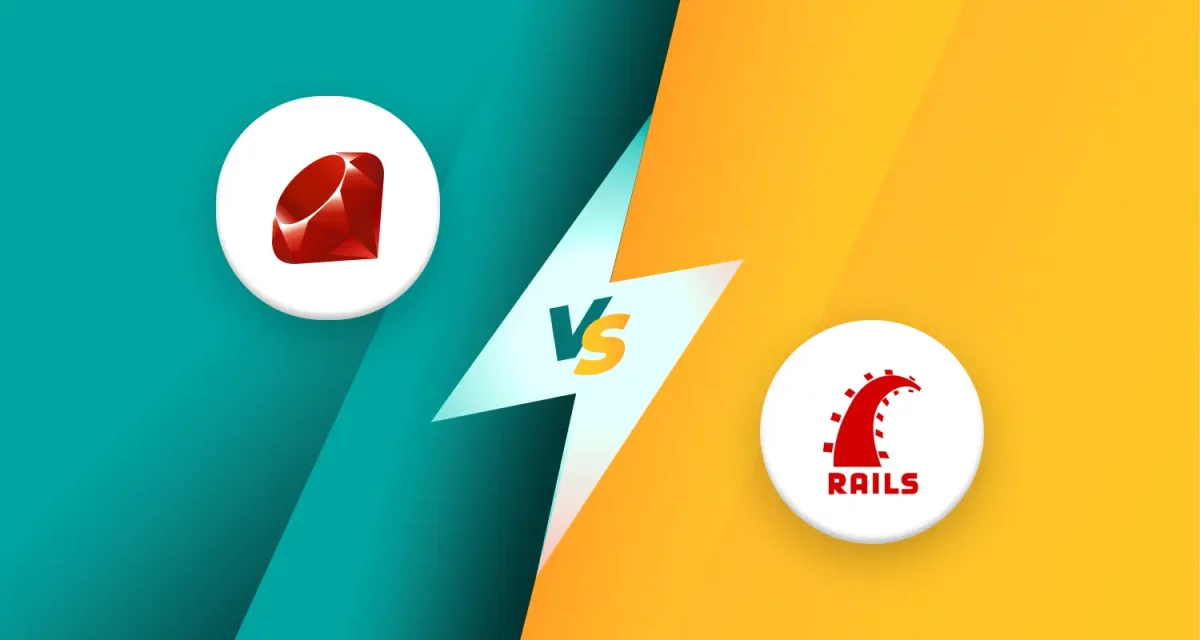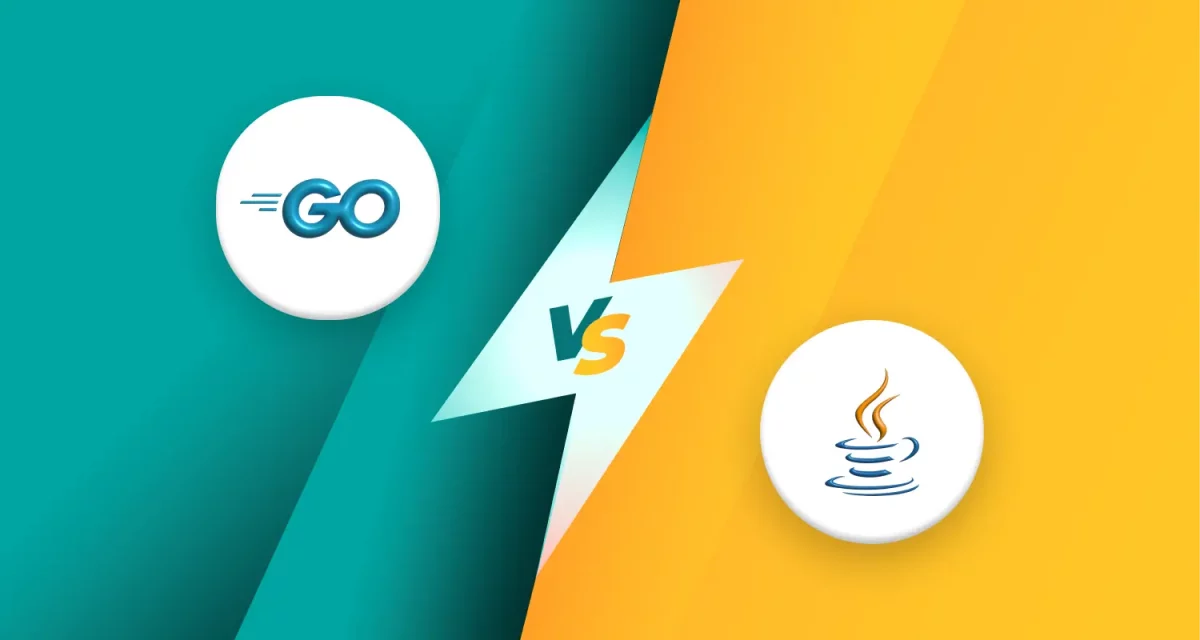
Let’s explore the types of web applications, the web development technologies that power them, and their respective benefits and limitations.
For business owners, selecting the correct type of web application is crucial. A poorly designed application can lead to slow performance, security vulnerabilities, and a frustrating user experience. On the other hand, a well-optimized web application can boost customer engagement, streamline operations, and improve brand credibility.
Entrepreneurs launching an online service must evaluate their needs, assess available technologies, and work with developers to create an application that aligns with their objectives.
This guide will delve into the various types of web applications, exploring their functionalities, underlying technologies, and the benefits and limitations of each. Whether you are looking to launch an online service, enhance your web development skills, or simply expand your knowledge of digital platforms, this comprehensive breakdown will provide valuable insights into the world of web applications.
1. What is a web application?
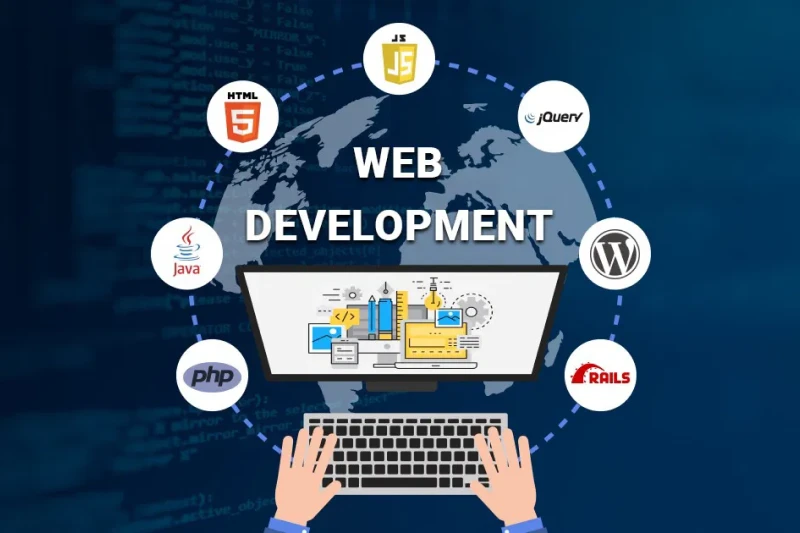
Software designed to operate on a web server and be accessible via a web browser is known as a web application. Unlike traditional desktop applications, web applications do not require installation and can be used on various devices, making them a vital component of modern digital experiences. Businesses, developers, and individuals leverage web applications for multiple purposes, from e-commerce to content management and interactive services.
Web application development involves designing, building, and maintaining web-based software using various web development technologies. These technologies range from front-end development tools like HTML, CSS, and JavaScript to back-end development frameworks like Node.js, Python, and Ruby on Rails.
With the evolution of cloud computing and APIs, web applications have become more powerful and scalable, catering to the needs of businesses and users worldwide.
2. 10 Types of web applications
The types of web applications vary based on functionality, user interaction, and the technology stack used in their development. Understanding these distinctions is crucial for selecting the best approach for a project.
2.1. Static web applications
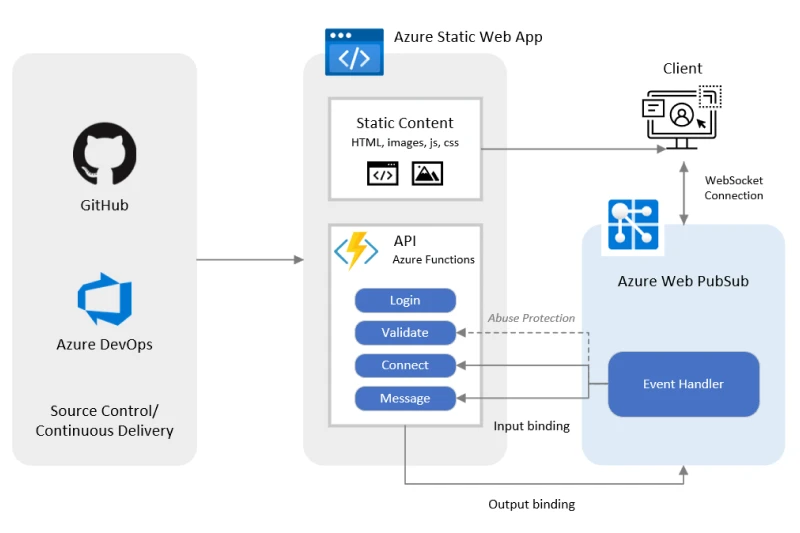
Static web applications consist of fixed content that does not change unless manually updated by a developer. These applications use essential web technologies such as HTML, CSS, and JavaScript.
They are fast and secure but lack interactivity. They are ideal for business portfolios, informational websites, and blogs that do not require real-time user interaction.
2.2. Dynamic web applications
Content within dynamic web applications is produced on demand, changing as users engage with the site. They rely on databases and back-end programming languages like PHP, Python, or Node.js.
These applications provide personalized user experiences and are commonly used for social media platforms, forums, and business dashboards.
A comparison of static vs dynamic web applications highlights that dynamic apps are more flexible but may require more resources to develop and maintain.
2.3. Single-page web applications (SPA)
Instead of loading new pages, Single-Page Applications (SPAs) begin with a single HTML document and then modify the displayed content in response to user actions. Popular JavaScript frameworks such as React, Angular, and Vue.js are frequently employed in their development. They offer a seamless user experience with faster interactions but can be challenging to optimize for SEO. Common examples include Gmail, Trello, and Facebook.
2.4. Multi-page web applications (MPA)
MPAs consist of multiple pages, each requiring a full reload when navigating between sections. Traditional e-commerce platforms and enterprise applications often use this structure. MPAs provide better SEO advantages due to separate page URLs but may perform slower than SPAs.
2.5. Content management systems (CMS)
A CMS-based web application allows users to create, edit, and manage digital content without extensive technical knowledge. Among the widely used Content Management Systems are WordPress, Joomla, and Drupal. These web applications enhance functionality by providing built-in SEO, themes, and plugins.
2.6. E-commerce web applications
E-commerce applications facilitate online transactions and include features such as product catalogs, shopping carts, and secure payment gateways. Shopify, Magento, and WooCommerce are common platforms for e-commerce applications. They integrate responsive design to ensure a seamless shopping experience across devices.
2.7. Animated web applications
Animated web applications use visual effects and motion design to enhance user engagement. Technologies like HTML5 Canvas and WebGL enable interactive and visually appealing animations. These are popular in online gaming, digital storytelling, and marketing campaigns.
2.8. Portal web applications
Portal web applications serve as centralized platforms offering access to various services like email, forums, and user dashboards. Enterprise portals and educational platforms often utilize this model. These applications require full-stack development expertise to ensure seamless integration of multiple functionalities.
2.9. Rich Internet Applications (RIA)
RIAs offer a user experience similar to desktop applications with enhanced interactivity. They leverage frameworks like Adobe Flash (historically) and modern alternatives like WebAssembly. These applications require high-performance back-end development to ensure smooth user interactions.
2.10. Progressive Web Applications (PWA)
PWAs combine web and mobile application functionalities, providing offline access, fast loading times, and push notifications. They are built using service workers and work seamlessly across different devices.
Many consider PWAs among the best web development technologies in 2025 due to their growing adoption in the mobile-first digital landscape.
3. Advantages and disadvantages of web applications
Web applications offer numerous benefits but also present specific challenges. Understanding the advantages and disadvantages of web applications helps businesses and developers make informed decisions when choosing a development approach.
3.1. Advantages
- Accessibility and convenience
Web applications can be accessed from any device with an internet connection, eliminating the need for installation and ensuring ease of use. They support cross-platform compatibility, allowing users to operate them on different operating systems and devices.
- Cross-platform compatibility
Unlike native applications that require different versions of various operating systems, web applications function on multiple devices and browsers. This reduces development costs and ensures a wider audience reach.
- Centralized updates and maintenance
Updates and maintenance occur on the server side, ensuring users can access the latest version without manual installations. This enhances security and performance by eliminating outdated software versions on user devices.
3.2. Disadvantages
- Dependence on Internet connectivity
Most web applications require an active internet connection, limiting accessibility in areas with poor network coverage. However, Progressive Web Applications (PWAs) address this issue by offering offline functionality.
- Security concerns
Since web applications store data on remote servers, they are vulnerable to cyber threats like breaches and hacking attempts. Safeguarding information relies heavily on applying powerful security techniques, like encryption and verified access.
- Performance limitations
Web applications may experience slower performance compared to native applications, especially when handling complex tasks or large datasets. Developers optimize performance using efficient back-end development techniques and modern frameworks like Node.js and SQL databases.
4. Best web development technologies 2025
As web technologies evolve, staying updated with the best web development technologies in 2025 is crucial for developers and businesses aiming to create high-performance, scalable, and user-friendly applications. The landscape of web application development is driven by innovation in front-end development, back-end development, databases, cloud computing, and APIs, with each playing a critical role in shaping modern web applications.
4.1. Front-end development technologies
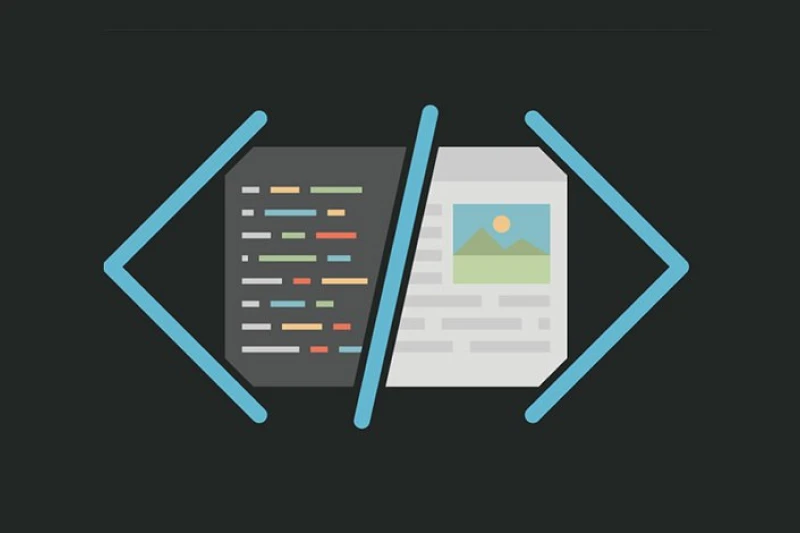
Front-end development focuses on a web application’s visual and interactive aspects, ensuring a seamless user experience across devices.
The best front-end technologies in 2025 include:
- HTML (HyperText Markup Language): The backbone of web structure, used to define the layout of web pages.
- CSS (Cascading Style Sheets): Responsible for styling and responsive design, ensuring websites adapt to different screen sizes.
- JavaScript: The primary programming language for adding interactivity to web pages. Modern JavaScript frameworks enhance development speed and efficiency.
- React.js: A widely used JavaScript library developed by Facebook for building SPAs with reusable UI components. It is known for its virtual DOM and state management.
- Angular: A TypeScript-based framework developed by Google, ideal for enterprise-level applications due to its modular structure and built-in features like dependency injection.
- Vue.js: A lightweight framework known for its simplicity and flexibility, offering a balance between React and Angular for developers looking for ease of use and powerful functionality.
These front-end technologies ensure fast loading times, interactive user interfaces, and an engaging user experience, making them essential for web application development in 2025.
4.2. Back-end development technologies
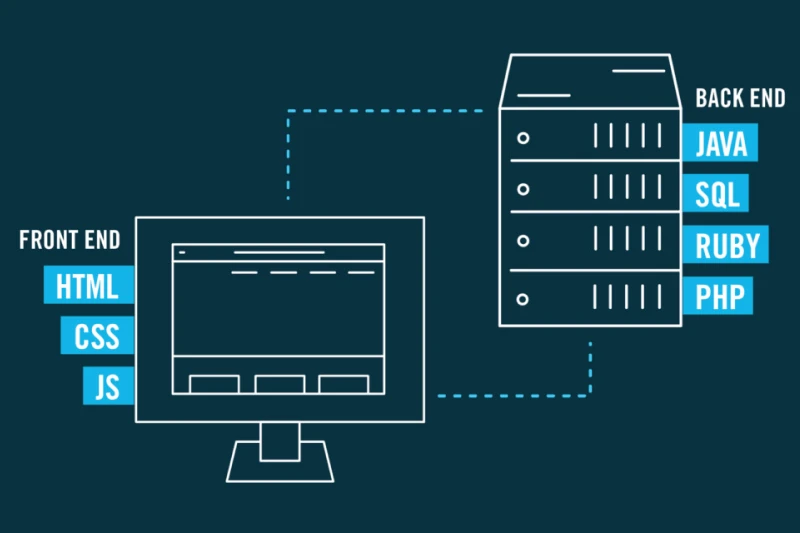
Back-end development handles the server-side logic, database interactions, and overall functionality of web applications. Developers rely on the following technologies to create robust and scalable back-end systems:
- Node.js: A JavaScript runtime environment that allows developers to use JavaScript for both front-end and back-end development, making it a top choice for full-stack development.
- Python: Known for its simplicity and readability, Python is widely used in web development, especially for AI-driven applications, data analytics, and web APIs. Frameworks like Django and Flask enhance
Python’s capabilities.
- Ruby on Rails: A developer-friendly framework emphasizing convention over configuration, making web application development faster and more efficient.
- PHP: A widely-used scripting language that powers platforms like WordPress and Laravel. Despite competition from modern frameworks, PHP remains a top choice for CMS-based and e-commerce applications.
With the rise of cloud computing and serverless architectures, back-end technologies must be optimized for performance, security, and scalability.
4.3. Database technologies
Databases store and manage application data, which is critical in web development technologies. The two primary types of databases are:
- SQL Databases (Structured Query Language): Traditional relational databases that ensure data integrity and structured organization. Examples include:
- MySQL: A reliable, open-source database used in many web applications.
- PostgreSQL: Known for its scalability, security, and compliance with ACID properties.
- Microsoft SQL Server: A robust enterprise solution with powerful data management tools.
- NoSQL Databases: Non-relational databases designed for high-speed processing, flexibility, and handling large volumes of unstructured data. Popular NoSQL databases include:
- MongoDB: A document-based NoSQL database that supports scalability and real-time applications.
- Cassandra: Developed by Facebook, Cassandra offers distributed and highly available database management.
Choosing the proper database depends on the complexity of the application and the need for structured or flexible data storage.
4.4. Cloud computing technologies
Cloud computing changes how businesses develop web applications. It allows them to deploy and scale applications quickly without relying on traditional servers. The best cloud computing platforms in 2025 include:
- Amazon Web Services (AWS): A market leader offering a vast range of cloud services, from computing power to AI-based solutions.
- Google Cloud Platform (GCP): Known for its AI-driven features and seamless integration with Google services.
- Microsoft Azure: A preferred choice for enterprise applications, offering hybrid cloud solutions and substantial security compliance.
Cloud computing ensures high availability, cost efficiency, and enhanced security for web applications, making it a crucial part of modern web development technologies.
4.5. APIs and integration technologies
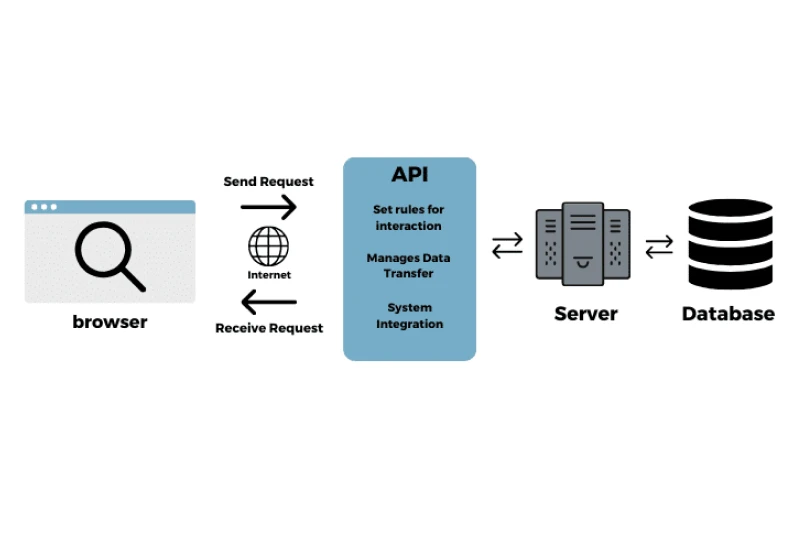
APIs (Application Programming Interfaces) enable communication between software systems, enhancing web application functionality. In 2025, the most widely used API technologies include:
- RESTful APIs: A standard architectural style that enables seamless communication between web services.
- GraphQL: A modern alternative to REST, allowing clients to request specific data structures for optimized performance.
- WebSockets: Essential for real-time applications like chat apps and online gaming platforms.
APIs facilitate integrating third-party services, such as payment gateways, authentication systems, and data analytics tools, making them a core component of full-stack development.
5. The role of responsive design and user experience in web applications
As web applications evolve, two essential factors are crucial to their success: responsive design and user experience (UX). These elements ensure that web applications remain accessible, user-friendly, and adaptable to different devices and screen sizes.
5.1. Importance of responsive design
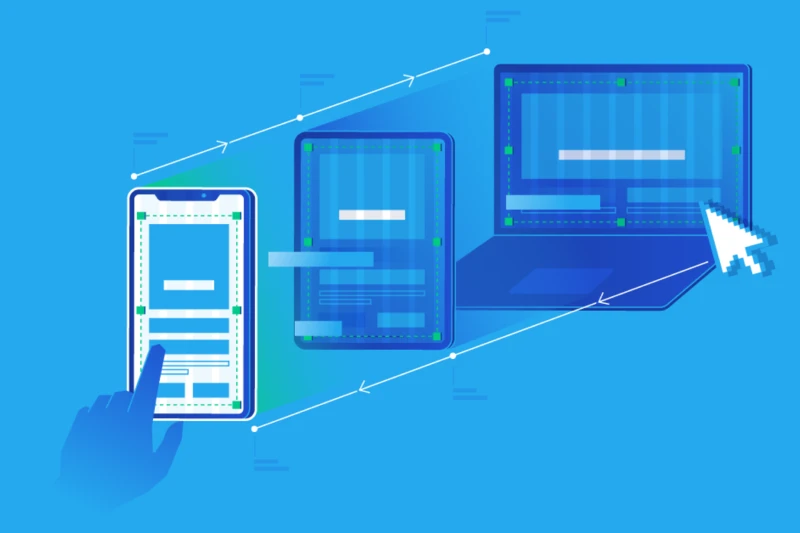
Responsive design enables a web application to function seamlessly across desktops, tablets, and mobile devices. With the increasing use of smartphones for browsing, a mobile-friendly approach is vital.
Technologies such as CSS media queries and frameworks like Bootstrap and Tailwind CSS help developers create adaptive web applications that dynamically adjust layout, images, and navigation.
- Enhanced usability: Users can interact with the web application effortlessly, regardless of their device.
- SEO advantages: For optimal search engine optimization, it’s beneficial to have a website that is designed for mobile devices, as search engines give those sites preferential ranking.
- Increased reach: A responsive application attracts a broader audience across different devices.
5.2. User experience (UX) in web application development

A well-designed UX ensures that web applications provide intuitive navigation, fast load times, and seamless interactions. Factors such as page speed optimization, clear call-to-action (CTA) buttons, and interactive UI components contribute to a positive user experience.
Frameworks like React, Angular, and Vue.js enable developers to build engaging and dynamic user interfaces.
- Minimalist and clean UI: Reduces clutter and enhances readability.
- Fast-loading pages: Optimized code and caching improve performance.
- Accessibility features: Ensuring inclusivity for users with disabilities.
By integrating responsive design and prioritizing user experience, businesses and developers can enhance their web application engagement, retention, and overall success.
6. Future trends in web application development
The web application landscape continuously evolves, driven by technological advancements and changing user demands. As businesses strive to enhance user experiences and optimize performance, several emerging trends are shaping the future of web development.
6.1. Artificial Intelligence and Machine Learning Integration
AI and machine learning transform web applications by enabling automation, personalization, and predictive analytics. Chatbots, voice assistants, and AI-driven recommendations enhance user engagement and streamline customer support. Companies like Amazon and Netflix leverage AI to personalize content, making interactions more intuitive and data-driven.
6.2. Serverless architecture
Serverless computing eliminates the need for developers to manage infrastructure, allowing them to focus on coding and application functionality. Platforms like AWS Lambda, Google Cloud Functions, and Microsoft Azure Functions enable auto-scaling, reducing operational costs while ensuring high availability.
6.3. WebAssembly for high-performance applications
WebAssembly (Wasm) is gaining traction as a technology that enables near-native application performance on web browsers. It allows developers to write applications in languages like C, C++, and Rust, which can run efficiently alongside JavaScript. This mainly benefits gaming applications, video editing tools, and data-intensive software.
6.4. Edge computing for faster processing
Edge computing revolutionizes web applications by processing data closer to the user rather than relying on centralized cloud servers. This reduces latency and improves response times, making it ideal for IoT applications, real-time analytics, and interactive platforms.
6.5. Enhanced cybersecurity measures
As cyber threats continue to rise, web applications must adopt stronger security measures. Multi-factor authentication (MFA), zero-trust architecture, and blockchain-based security models are becoming essential in protecting user data and ensuring compliance with global data regulations.
By keeping pace with these trends, businesses and developers can build web applications that are future-proof, scalable, and capable of delivering superior user experiences.
7. Conclusion
Web applications have become a cornerstone of modern technology, offering businesses and individuals a flexible, scalable, and accessible solution for various needs. Understanding the different types of web applications and the technologies behind them enables developers and business owners to make informed decisions when choosing the best approach for their projects.
While web applications present numerous advantages, such as cross-platform compatibility and centralized maintenance, they pose challenges like internet dependence and security risks. By leveraging the right web development technologies and strategic implementation, businesses can maximize the benefits of web applications while mitigating potential drawbacks.


